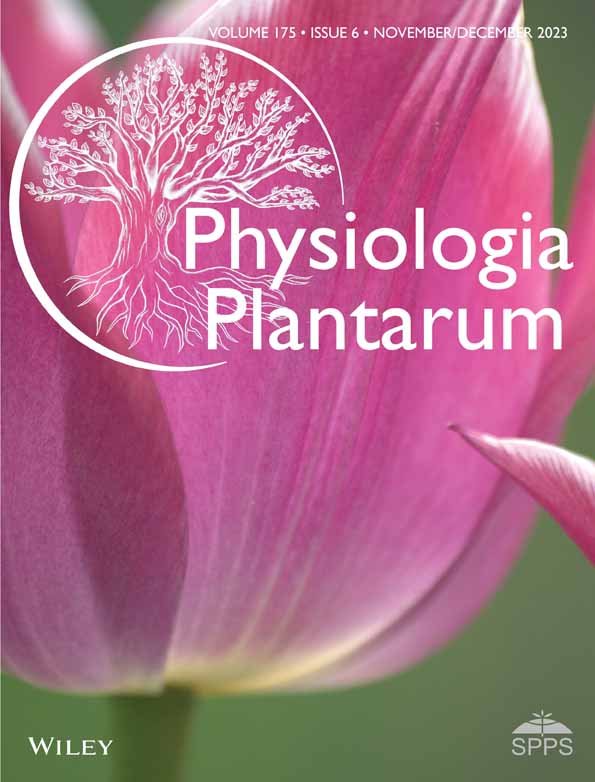Ver ítem
- xmlui.general.dspace_homeCentros Regionales y EEAsCentro Regional Tucumán - Santiago del EsteroEEA Santiago del EsteroArtículos científicosxmlui.ArtifactBrowser.ItemViewer.trail
- Inicio
- Centros Regionales y EEAs
- Centro Regional Tucumán - Santiago del Estero
- EEA Santiago del Estero
- Artículos científicos
- Ver ítem
Oxidative stress mitigation in horticultural crops using foliar applications of Ilex paraguariensis extract: a dose-dependent study
Resumen
Abiotic stress has been shown to induce the formation of reactive oxygen species (ROS) in plant cells. When the level of ROS surpasses the capacity of the endogenous defence mechanism, oxidative stress status is reached, leading to plant damage and a drop in crop productivity. Under oxidative stress conditions, ROS can react with polyunsaturated fatty acids to form oxidized derivatives called phytoprostanes (PhytoPs) and phytofurans (PhytoFs), which are
[ver mas...]
Abiotic stress has been shown to induce the formation of reactive oxygen species (ROS) in plant cells. When the level of ROS surpasses the capacity of the endogenous defence mechanism, oxidative stress status is reached, leading to plant damage and a drop in crop productivity. Under oxidative stress conditions, ROS can react with polyunsaturated fatty acids to form oxidized derivatives called phytoprostanes (PhytoPs) and phytofurans (PhytoFs), which are recognized as biomarkers of oxidative damage advance. Modern agriculture proposes the use of biostimulants as a sustainable strategy to alleviate the negative effects of oxidative stress on plants. This work evaluates the dose effect of natural antioxidant extract to mitigate the oxidative-stress deleterious effects in melon and sweet pepper exposed to thermal stress. The plants were sprayed with Ilex paraguariensis (IP) aqueous extract in three different concentrations before exposure to abiotic stress. PhytoP and PhytoF levels were determined in the leaves of melon and pepper plants. IP1 and IP2 were effective against oxidative stress in both plants, with IP1 being the most protective one. IP1 decreased the levels of PhytoPs and PhytoFs by roughly 44% in both melon plants and pepper plants. The yield, with IP1, increased by 57 and 39% in stressed melon and pepper plants, respectively. IP3 foliar application in melon plants induced a pro-oxidant effect rather than the expected mitigating action. However, in sweet pepper plants, IP3 decreased the oxidative stress progress and increased the fruit yield.
[Cerrar]

Autor
Yonny, Melisa Evangelina;
Toscano Adamo, Maria L.;
Rodriguez Torressi, Ariel;
Reversat, Guillaume;
Binqging, Zhou;
Oger, Camille;
Galano, Jean-Marie;
Durand, Thierry;
Vigor, Claire;
Nazareno, Mónica Azucena;
Fuente
Physiologia Plantarum 175 (6) : e14066. (November/December 2023)
Fecha
2023-11
Editorial
Wiley
ISSN
0031-9317
1399-3054
1399-3054
Formato
pdf
Tipo de documento
artículo
Palabras Claves
Derechos de acceso
Restringido
 Excepto donde se diga explicitamente, este item se publica bajo la siguiente descripción: Creative Commons Attribution-NonCommercial-ShareAlike 2.5 Unported (CC BY-NC-SA 2.5)
Excepto donde se diga explicitamente, este item se publica bajo la siguiente descripción: Creative Commons Attribution-NonCommercial-ShareAlike 2.5 Unported (CC BY-NC-SA 2.5)


